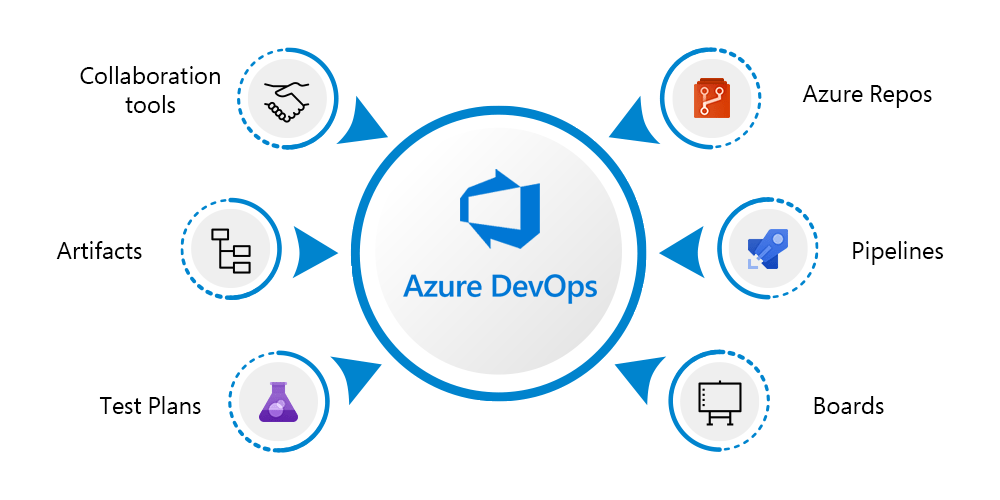In the fast-paced and dynamic landscape of human resources (HR), the need for efficient and collaborative solutions has never been greater. Microsoft Azure DevOps, a versatile suite of development tools, offers a wealth of possibilities beyond its traditional use in software development. This article explores, in detail, how HR professionals can harness the power of Azure DevOps in various scenarios, supported by real-world examples and step-by-step instructions.
- Recruitment and Onboarding:
Recruitment is a critical aspect of HR operations, and Azure DevOps can revolutionize this process by providing a structured and transparent approach. By setting up Azure Boards and Repos, HR teams can seamlessly manage job requisitions, candidate screening, and onboarding tasks.
Steps:
a. Create a New Project: – Log in to the Azure DevOps portal and navigate to the organization. – Click on “New Project” and provide the necessary details, such as project name and description.
b. Configure Azure Boards: – Within the created project, set up Azure Boards to facilitate project planning and tracking. – Define work items for tasks like job requisition approvals, candidate screening, and interview scheduling.
c. Integrate with Azure Repos: – Utilize Azure Repos to store and manage essential documents such as job descriptions, interview templates, and candidate profiles. – Set up version control to track changes and maintain a clear audit trail.
d. Automate Approval Workflows: – Leverage Azure Pipelines to create automated approval workflows. – Configure pipelines to trigger when specific criteria, such as candidate screening results, are met.
Example: A global IT services company implemented Azure DevOps in their recruitment process. Azure Boards were used to track candidate progress, while Azure Repos ensured version-controlled management of candidate documents. The automated approval workflows reduced the time taken for requisition approvals, leading to quicker hiring cycles.
- Employee Training and Development:
HR plays a pivotal role in employee development, and Azure DevOps offers a structured approach to managing training initiatives. Azure Boards and Pipelines can be employed to plan, deploy, and track training programs effectively.
Steps:
a. Set Up a New Project for Training: – Create a new project specifically dedicated to training and development.
b. Define Work Items for Training Modules: – Utilize Azure Boards to create work items for each training module. – Specify details such as objectives, target audience, and key milestones.
c. Configure Pipelines for Content Deployment: – Leverage Azure Pipelines to automate the deployment of training materials. – Link pipelines to specific work items or training modules for seamless integration.
d. Version Control with Azure Repos: – Use Azure Repos to maintain version control for training materials, ensuring consistency across the organization.
Example: A technology firm adopted Azure DevOps for their employee training programs. Azure Boards were used to plan and track training modules, while Pipelines automated the distribution of materials. The result was a more standardized and efficient learning experience for employees.
- Performance Management:
Azure DevOps can be instrumental in creating a transparent and data-driven approach to performance management. By utilizing Azure Boards and Repos, HR teams can track individual and team performance metrics in real-time.
Steps:
a. Set Up Boards and Dashboards: – Configure Azure Boards to create dashboards for visualizing performance metrics. – Define key performance indicators (KPIs) to track individual and team goals.
b. Define Work Items for Goals and Milestones: – Utilize work items to define and track individual and team goals. – Regularly update work items to reflect progress and achievements.
c. Automate Performance Data Updates: – Integrate Azure Pipelines to automate the updating of performance data. – Link pipelines to data sources such as project management tools or performance tracking systems.
d. Version Control with Azure Repos: – Store and manage performance documents, feedback, and reviews using Azure Repos. – Ensure version control to track changes and maintain a comprehensive performance history.
Example: A financial services organization embraced Azure DevOps for performance management. Azure Boards provided real-time performance dashboards, while Repos stored and version-controlled performance documents. This led to more informed and constructive performance discussions during reviews.
- Employee Engagement and Communication:
Communication and collaboration are essential in HR, and Azure DevOps can facilitate internal projects and initiatives effectively. By utilizing Azure Boards and Repos, HR professionals can collaborate on projects, share updates, and engage the workforce.
Steps:
a. Create a Project for Internal Initiatives: – Establish a project within Azure DevOps dedicated to internal HR initiatives.
b. Utilize Azure Boards for Task Management: – Leverage Azure Boards for task management and collaboration. – Create work items for various tasks within the project.
c. Version-Controlled Collaboration with Azure Repos: – Use Azure Repos for version-controlled collaboration on project documents. – Multiple team members can contribute to documents while maintaining a clear version history.
d. Automate Project Updates with Pipelines: – Integrate Azure Pipelines to automate project updates. – Ensure stakeholders receive timely notifications and updates on project progress.
Example: An e-commerce company successfully used Azure DevOps for internal HR initiatives. Azure Boards facilitated task management, while Repos allowed version-controlled collaboration. The result was a more engaged and informed workforce, leading to successful project outcomes.
Conclusion:
In conclusion, Microsoft Azure DevOps provides HR professionals with a powerful set of tools to transform their operations. By applying Azure DevOps in recruitment, training, performance management, and communication scenarios, organizations can achieve greater efficiency, transparency, and collaboration. The step-by-step methods outlined in each scenario, supported by real-world examples, demonstrate the versatility of Azure DevOps in addressing the diverse needs of HR departments. As organizations continue to evolve, integrating Azure DevOps into HR practices positions them at the forefront of technological innovation and organizational effectiveness.











